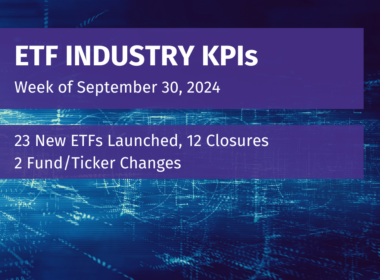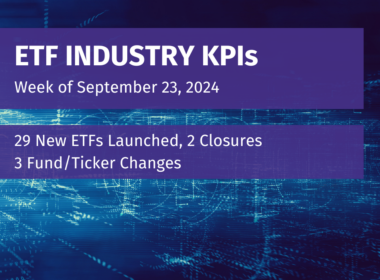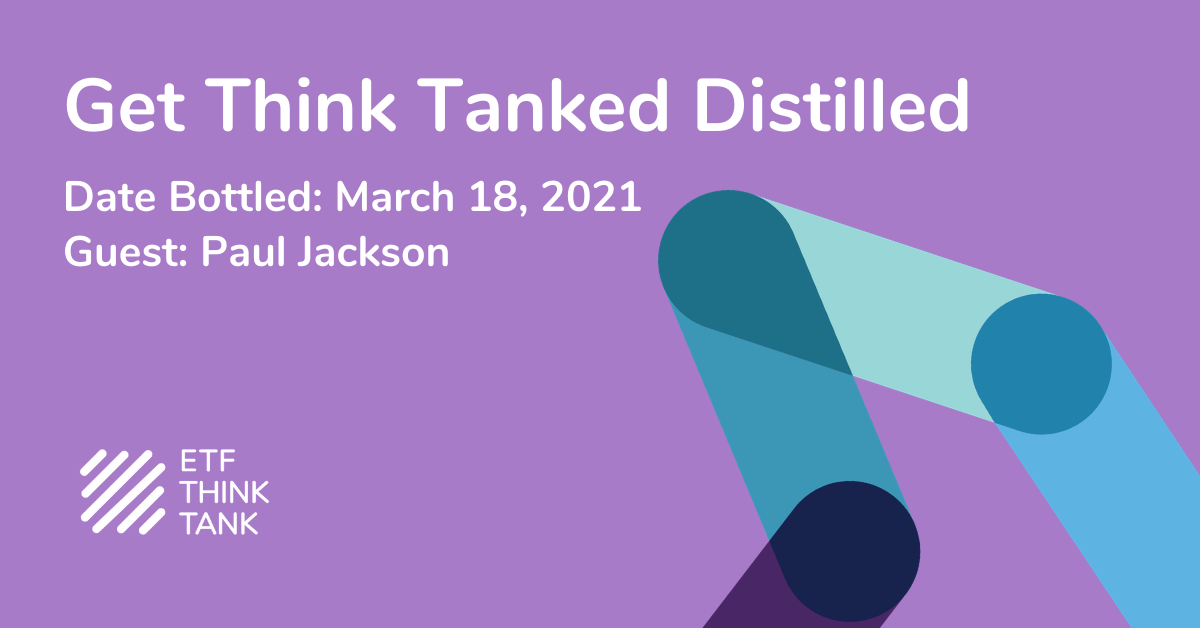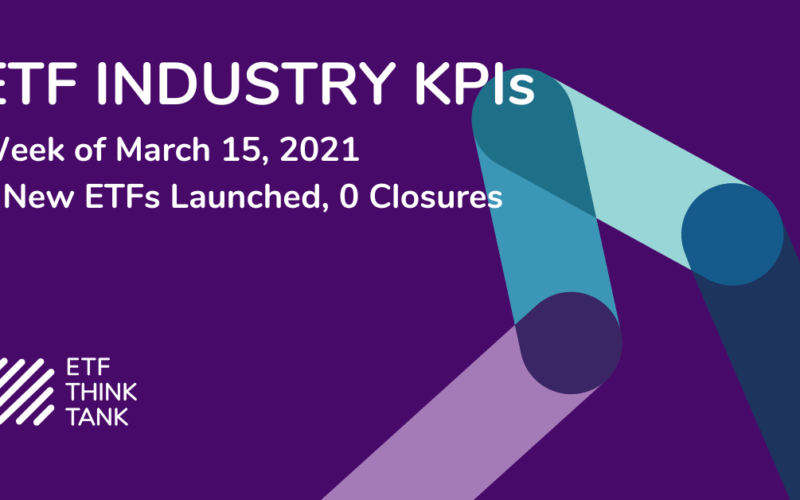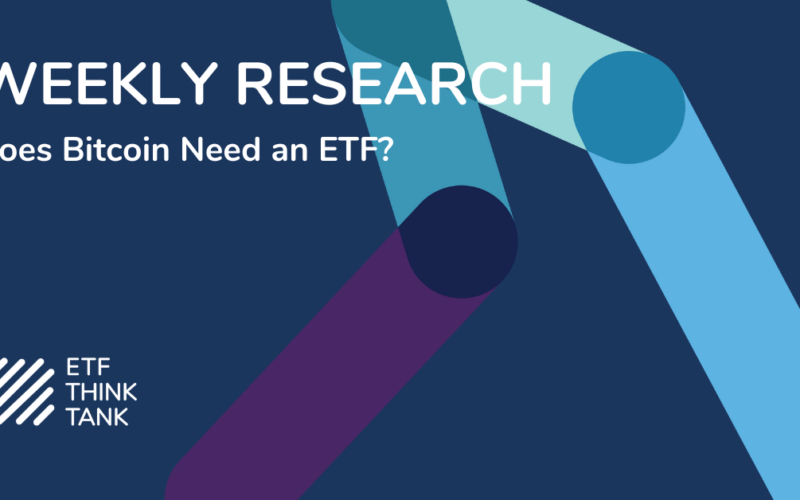We’ve all heard of the 60/40 portfolio and it’s often used as the benchmark for long-term buy-and-hold investing. With Treasury yields back on the rise and the prospects for fixed income looking much different now than they have over the past several decades, asset allocation is becoming more important than it has in a long time. That makes it an ideal for the ETF Think Tank to welcome Paul Jackson, the Global Head of Asset Allocation Research at Invesco, to bring his insights on the state of the financial markets.
The first question, not surprisingly, is whether or not the 60/40 portfolio still works in this environment. Jackson said that the “60” has definitely been working. While he says he’s never seen a recession quite like the one we’ve experienced over the past 12 months, the amount of government stimulus cash that’s being thrown at both consumers and business, at least some of which is likely making its way into the financial markets, is fueling an unprecedented recovery. The uniqueness of the current environment, however, is making the markets difficult to analyze from a risk perspective.
A year ago, the “40” was working, but not anymore, according to Jackson. With interest rates on the rise off of historically low levels, he believes that investors should not be locking themselves into negative real returns. Fixed income looks relatively unattractive here and cyclical risk assets are more preferable.
If the “40” in the 60/40 portfolio isn’t working, what should investors be using to fill in that segment of the portfolio that typically goes to bonds? Jackson actually prefers cash. He notes that while cash won’t earn you anything right now, at least you know it won’t earn anything. Gold and bitcoin, he says, are far too volatile to be considered a reliable risk-off asset. Looking at different asset classes – equities, bonds, commodities, real estate, private equity, etc. – all have some degree of correlation. Cash is the only uncorrelated asset.
Not surprisingly, Jackson has some thoughts on the Fed and its actions in recent years:
- The central bank is no longer data-driven, it’s market-driven. Whenever the market starts crying, the Fed comes to comfort it. Critical weaknesses are being built up and could reveal themselves in a nasty way.
- Over the past 3-4 decades, he gives the Fed low grades for its actions. The central bank has reduced a lot of consequences for making mistakes. The Fed needs to stop saying that it won’t upset the apple cart. Instead, it needs to acknowledge that current policy is in an extreme position and it needs to correct that over time.
- During this recession, the Fed gets a relatively good score because policy makers did what they had to do. The speed of the reaction was good and it has little choice but to act decisively. Market watchers should be less critical this time.
- When will the Fed start buying equities? Probably not this time around, but it’s possible during the next recession.

Jackson also believes that we’re in the early to middle stages of a new economic cycle, but notes that inflation is a concern. For investors who want to add an inflation hedge in their portfolio, it probably comes down to commodities, such as oil, gas, metals or miners, depending on where the inflation is coming from. TIPS are also a good choice as well as “value over growth” ideas.
One of the final topics was where Jackson sees opportunities for investors over the next several decades. He says if he were investing for his grandchildren, he would augment a core equities/real estate portfolio with satellite positions based on four themes – changing demographics, labor-saving innovation, carbon-reducing technology and carbon-removing technology.
This week we have Eric Basmajian, Economic Analyst and Founder of EPB Macro Research. We’ll be discussing stimulus, inflation, and, of course, macro research. Come join us! As always, bring your questions.
Disclosure
The information provided here is for financial professionals only and should not be considered an individualized recommendation or personalized investment advice. The investment strategies mentioned here may not be suitable for everyone. Each investor needs to review an investment strategy for his or her own particular situation before making any investment decision.
All expressions of opinion are subject to change without notice in reaction to shifting market conditions. Data contained herein from third party providers is obtained from what are considered reliable sources. However, its accuracy, completeness or reliability cannot be guaranteed.
Examples provided are for illustrative purposes only and not intended to be reflective of results you can expect to achieve.
All investments involve risk, including possible loss of principal.
The value of investments and the income from them can go down as well as up and investors may not get back the amounts originally invested, and can be affected by changes in interest rates, in exchange rates, general market conditions, political, social and economic developments and other variable factors. Investment involves risks including but not limited to, possible delays in payments and loss of income or capital. Neither Toroso nor any of its affiliates guarantees any rate of return or the return of capital invested. This commentary material is available for informational purposes only and nothing herein constitutes an offer to sell or a solicitation of an offer to buy any security and nothing herein should be construed as such. All investment strategies and investments involve risk of loss, including the possible loss of all amounts invested, and nothing herein should be construed as a guarantee of any specific outcome or profit. While we have gathered the information presented herein from sources that we believe to be reliable, we cannot guarantee the accuracy or completeness of the information presented and the information presented should not be relied upon as such. Any opinions expressed herein are our opinions and are current only as of the date of distribution, and are subject to change without notice. We disclaim any obligation to provide revised opinions in the event of changed circumstances.
The information in this material is confidential and proprietary and may not be used other than by the intended user. Neither Toroso or its affiliates or any of their officers or employees of Toroso accepts any liability whatsoever for any loss arising from any use of this material or its contents. This material may not be reproduced, distributed or published without prior written permission from Toroso. Distribution of this material may be restricted in certain jurisdictions. Any persons coming into possession of this material should seek advice for details of and observe such restrictions (if any).




